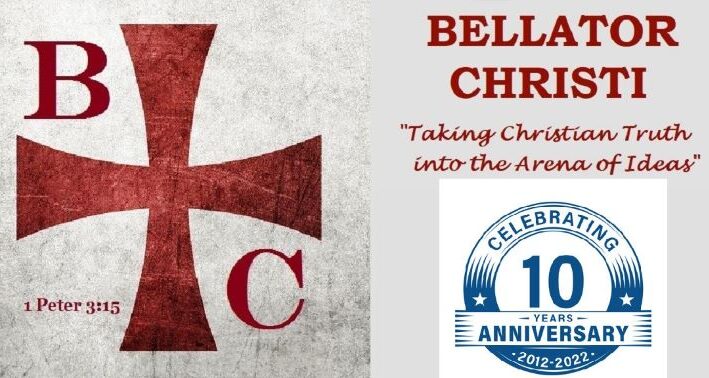By: Brian G. Chilton | March 22, 2021
Gary Habermas is no stranger to those who study the historicity of Jesus’s resurrection. He is a world-renowned scholar on the resurrection who serves as a Research Scholar teaching in the Ph.D. program in Theology and Apologetics at Liberty University’s School of Divinity. Habermas’s claim to fame is his six minimal facts concerning the resurrection of Jesus. His minimal facts are not the only facts available to defend the resurrection. However, they do serve as the six facts that over 90% of historical scholars accept as valid. Surprising to some, he also adds a seventh minimal fact which holds greater than 75% acceptance among historical scholars. The seventh minimal fact argues that the tomb was found empty.[1] Yet, one may ask, is there any evidence that the tomb was discovered empty on the first Easter Sunday?
The historian holds solid reasons to accept the empty tomb as a historical fact. Stemming from the research conducted in one of Habermas’s classes, I would like to submit twelve reasons why you should accept that the disciples discovered the tomb empty on the first Easter Sunday morning.
- The Gospel was first preached in Jerusalem, the very place where Jesus was crucified, which would have made it easy for an inquirer to check the tomb. If a person desired to invent a story, the last place they would tell the story would be in the very location where the event supposedly occurred. The enemies of Jesus would only need to check the tomb to see if it was empty.
- If Jesus’s disciples had only hallucinated, Jesus’s body would have still been in the tomb.[2] Because Jesus’s body was never retrieved and Christianity continued, then one must assume that the tomb of Jesus was empty. Hallucinations cannot account for an empty tomb.
- The message that Jesus had risen from the dead is extremely early. The creed of 1 Corinthians 15:3-7 dates early (within months to a couple of years after Jesus’s death, burial, and resurrection) and to the Jerusalem church.[3] Given that the resurrection message began in Jerusalem and that it began early, people could have easily checked to see if the tomb was empty. Some may inquire, “Would the people have known where the tomb was located?” To answer that question, see the next point.
- Joseph of Arimathea was a popular person in first-century Israel. Being a prominent member of the Sanhedrin (Mk. 15:43), everyone would have known where his tomb was located, and where Jesus’s body was placed. Remember, the crucifixion of Jesus was a very public event. The tomb was found very near to the crucifixion site.
- That women were reported to be the first to have seen the tomb empty strengthens the case for an empty tomb as the testimony of women was not trusted as much as the testimony of men.[4] This has been mentioned before, and for good reason. The women’s testimony not only strengthens the resurrection message, but their testimony also intensifies the validity that the tomb was found empty.
- Jewish authorities did not respond to the claim that Jesus’s tomb was empty. Rather, they concocted a rebuttal which argued that the disciples stole the body (Mt. 28:11-15). Ironically, their rebuttal actually strengthens the claim that the tomb was found empty.[5] Why concoct a story that the body of Jesus had been stolen if the body of Jesus was placed in a shallow grave, as suggested by John Dominick Crossan, or still remained entombed?
- The early creeds of Acts 13:29-31 and Acts 13:36-37 indicate more clearly than 1 Corinthians 15:3-7 that Jesus was buried in a tomb, raised, and appeared without experiencing bodily decay.[6] The book of Acts contains sermon summaries that are almost as early as the 1 Corinthians 15 creed—depending on the date given to the creed. These texts denote that the body of Jesus was no longer found in the tomb.
- Historian Paul Meier indicates that two or three sources render a historical fact “unimpeachable.”[7] The empty tomb is verified in four sources Mark, M (Matthew), John, and L (Luke),[8] with 1 Corinthians 15:3-7 and Acts 13’s sermon summary adding two more. Historically, the more sources one holds, the greater probability that the event in question occurred. In this case, at least 6 sources suggest that the tomb was empty, doubling what historians would call “unimpeachable.”
- The Jewish and Roman leaders never produced a body which at least implies an empty tomb.[9] If they were opposed to Christianity and possessed the body, why would they not expose it? Even if the Jews wouldn’t, the Romans would squelch what would be perceived as a new uprising.
- While the empty tomb does not enjoy unanimous support from scholarship, a strong majority still consider the empty tomb hypothesis valid including Michael Grant, James D. G. Dunn, and Thomas Torrance.[10] Habermas notes that over one-hundred contemporary scholars accept at least some of the arguments for the empty tomb.[11]
- The story of Jesus’s burial is simple without any form of theological development. Its simplicity argues for the empty tomb’s authenticity.[12] Signs of legendary development are simply not found in the empty tomb hypothesis.
- The resurrection story and the empty tomb are part of the pre-Markan passion story which is extremely early which precludes any time for legendary development.[13] Legendary claims do not apply to the empty tomb hypothesis. This suggests that the tomb was not something that came later in the Christian story but was rather found at ground zero.
Conclusion
The twelve points noted in this article are not the only lines of defense that could be construed. However, they strongly indicate that the story of the empty tomb was not something that developed over time, but it was rather a component that accompanied the earliest stories of the Messiah’s resurrection. Perhaps time will see more contemporary scholars accepting and adopting the empty tomb as part of the historian’s scholarly consensus. But even if they do not, 75% of the scholarly agreement is strong. Furthermore, the historical data concerning the empty tomb hypothesis cannot simply be ignored. No matter the consensus of agreement, the empty tomb is as steadfast a historical fact of antiquity as any other. If the Church of the Holy Sepulchre contains the actual burial place of Jesus, then not only can it be known that Jesus’s tomb was found empty, but it can also be visited. If people realized that the tomb was literally found empty, then maybe churches wouldn’t.
Notes
[1] Gary R. Habermas, The Historical Jesus: Ancient Evidence for the Life of Christ (Joplin, MO: College Press, 1996), 158.
[2] Gary R. Habermas, The Risen Jesus & Future Hope (Lanham, MD: Rowman & Littlefield, 2003), 11.
[3] Michael R. Licona, The Resurrection of Jesus: A New Historiographical Approach (Downers Grove; Nottingham, U.K.: IVP; Apollos, 2010), 227-228.
[4] Habermas, 23.
[5] Ibid.
[6] Ibid.
[7] Paul L. Maier, In the Fullness of Time: A Historian Looks at Christmas, Easter, and the Early Church (Grand Rapids: Kregel, 1997), 197.
[8] Habermas, 23.
[9] Ibid., 25.
[10] Ibid., 24.
[11] Ibid., 45, fn127.
[12] William Lane Craig, “The Empty Tomb of Jesus,” In Defense of Miracles: A Comprehensive Case for God’s Action in History, R. Douglas Geivett and Gary R. Habermas, eds (Downers Grove: IVP Academic, 1997), 250.
[13] Ibid., 254.
About the Author
Brian G. Chilton is the founder of BellatorChristi.com, the host of The Bellator Christi Podcast, and the author of the Layman’s Manual on Christian Apologetics. Brian is a Ph.D. Candidate of the Theology and Apologetics program at Liberty University. He received his Master of Divinity in Theology from Liberty University (with high distinction); his Bachelor of Science in Religious Studies and Philosophy from Gardner-Webb University (with honors); and received certification in Christian Apologetics from Biola University. Brian is enrolled in the Ph.D. program in Theology and Apologetics at Liberty University and is a member of the Evangelical Theological Society and the Evangelical Philosophical Society. Brian has served in pastoral ministry for nearly 20 years. He currently serves as a clinical chaplain.
https://www.amazon.com/Laymans-Manual-Christian-Apologetics-Essentials/dp/1532697104
© 2021. BellatorChristi.com.






[…] Por Brian Chilton […]